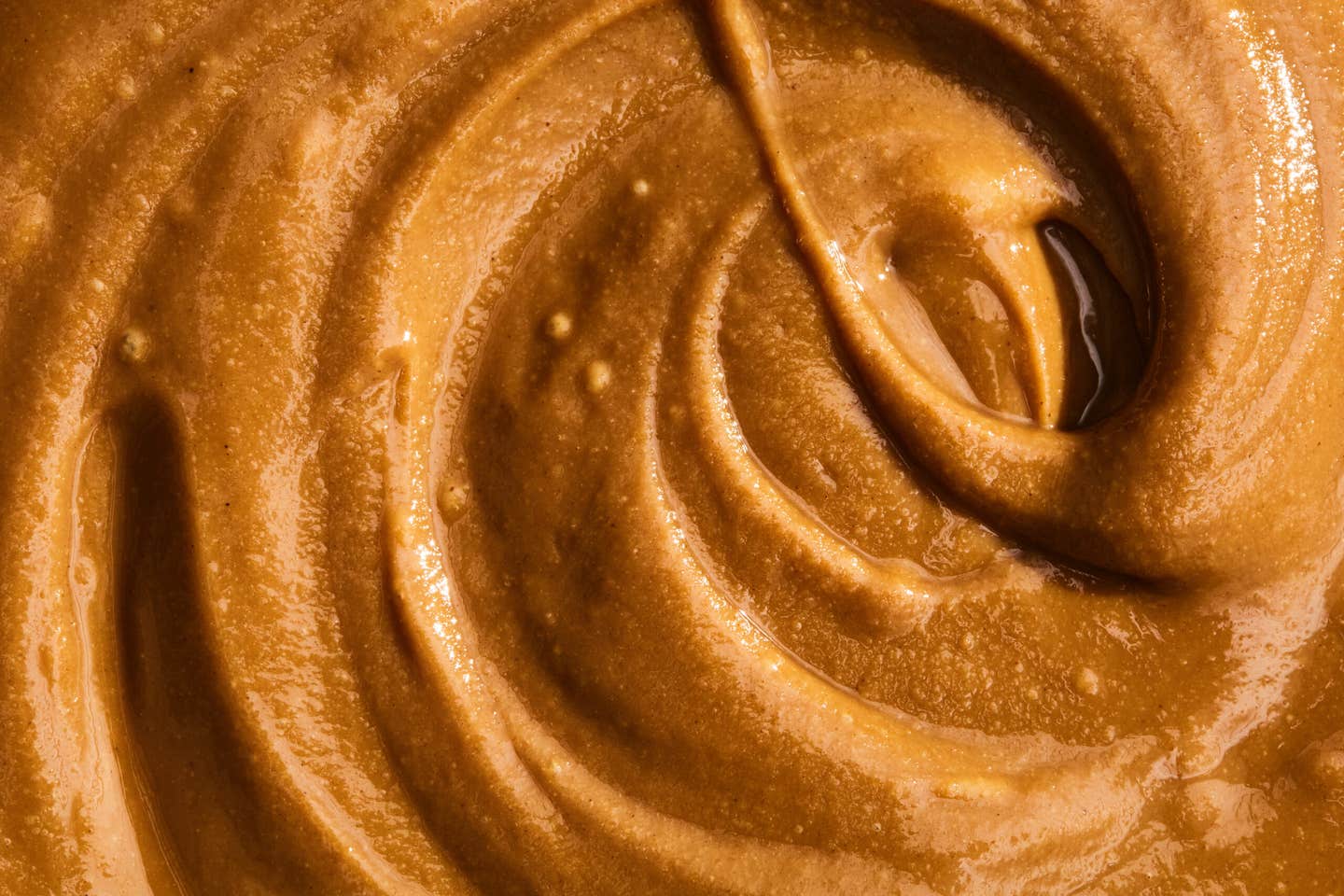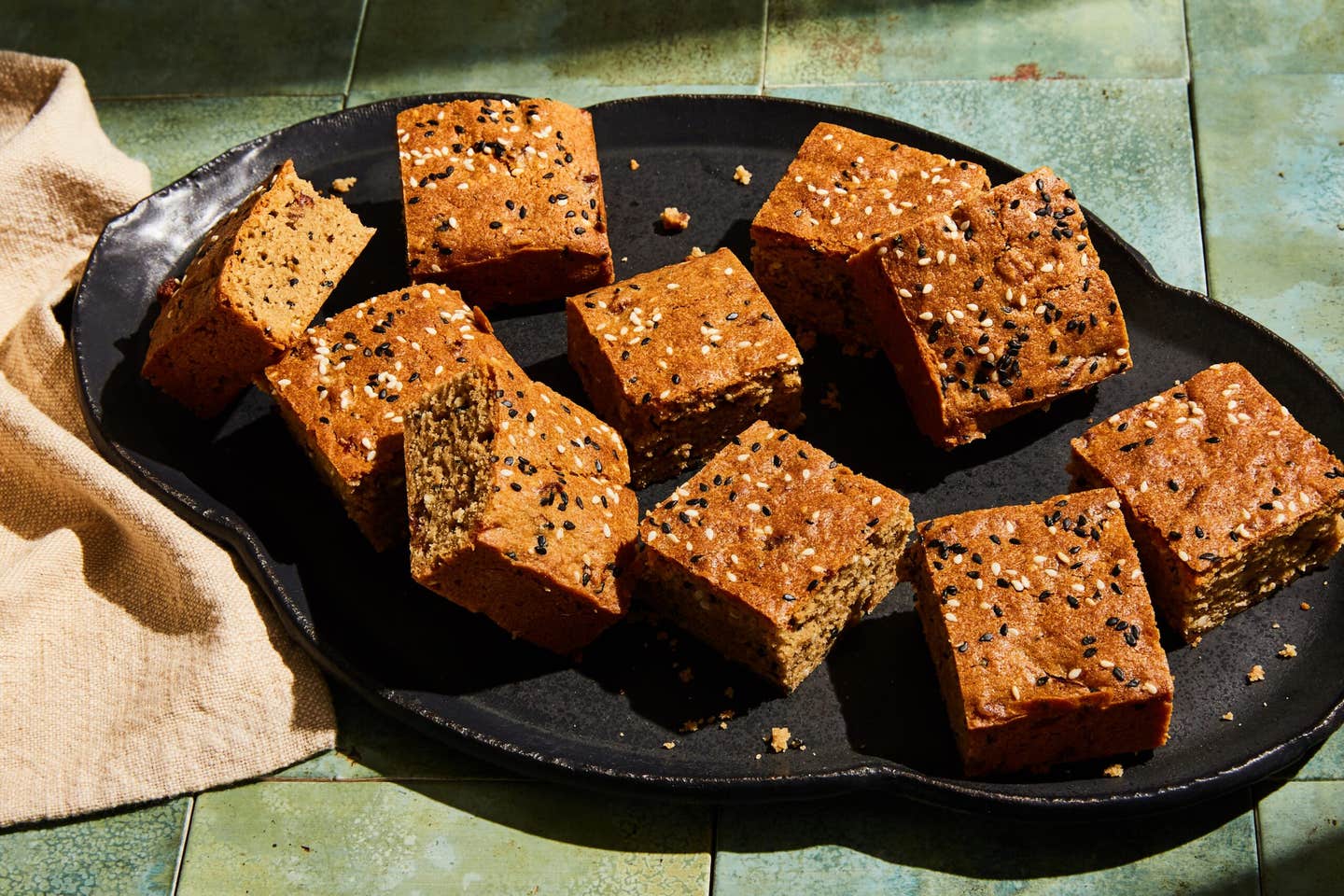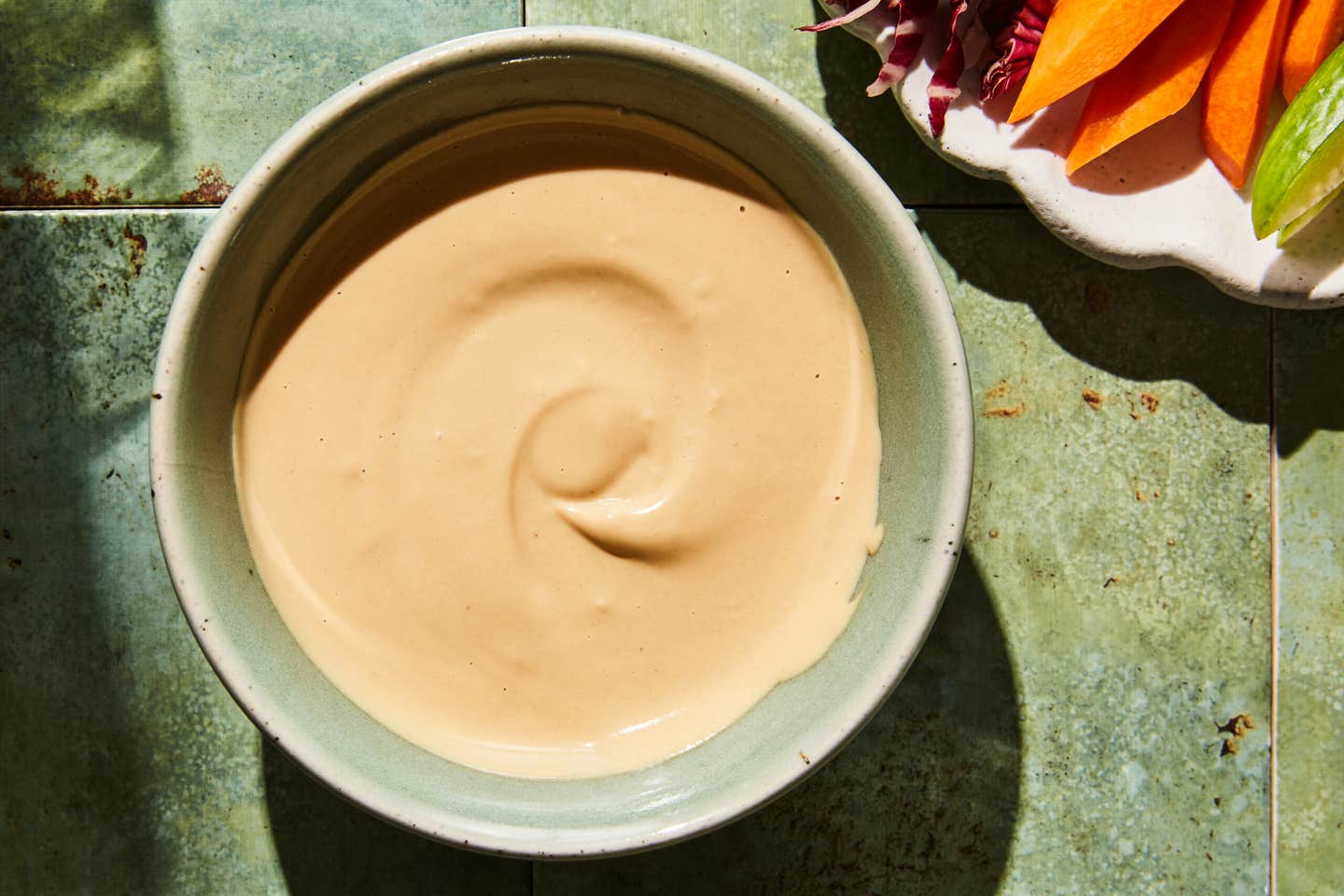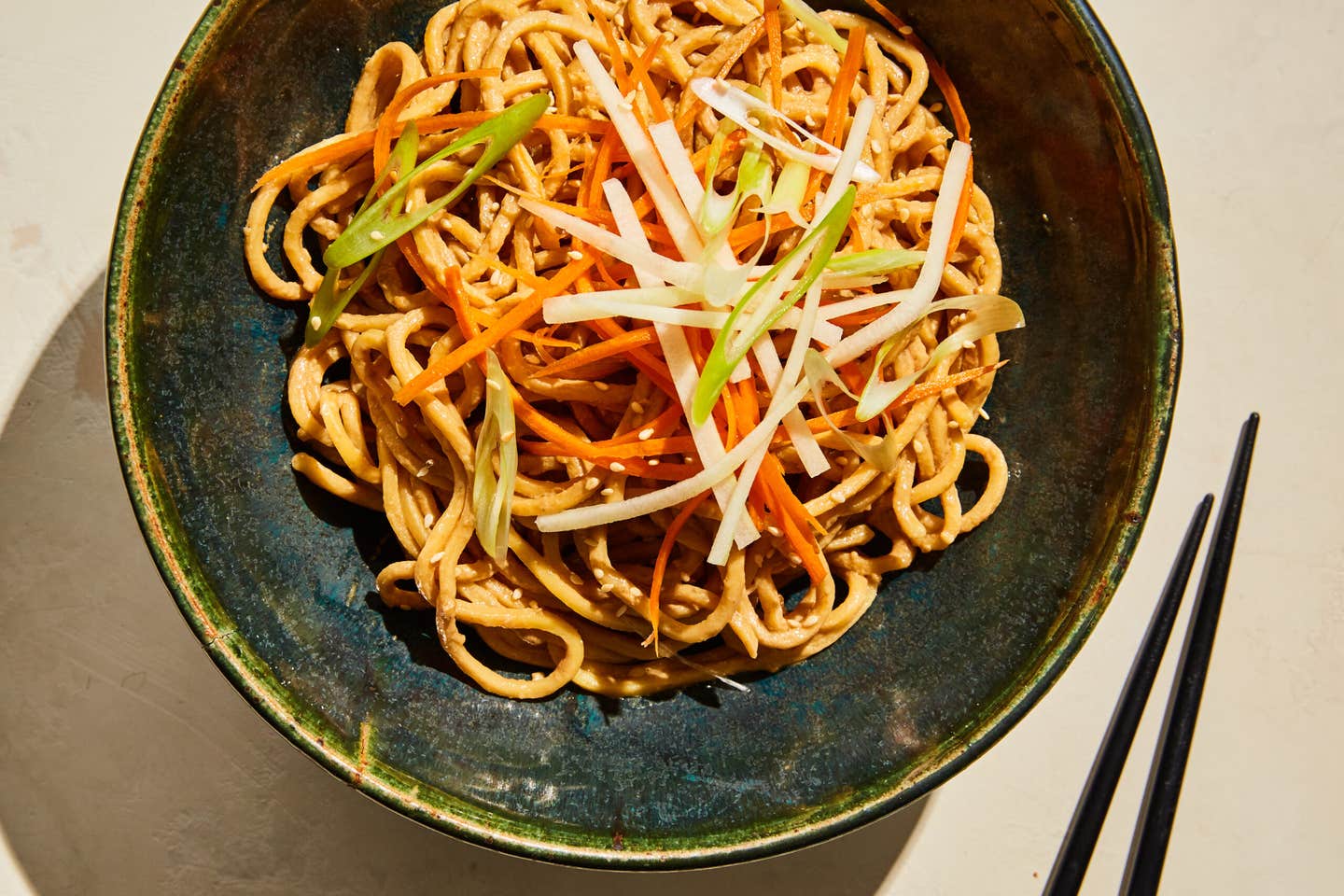
Sesame Paste Isn’t Tahini—And It Might Be Your New Favorite Condiment
The Chinese pantry staple adds nutty richness to noodles, sauces, pastries, and so much more.
In the summertime, my family likes to toss cold noodles with a dressing made from toasted sesame paste for an easy, refreshing meal. One of the first kitchen tasks my parents ever delegated to me when I was a kid was making that dressing. I shouldered the responsibility with relish—not only because sesame noodles are downright slurpable, but also because it meant digging into a jar of sesame paste and being able to lick the spoon afterward.
My childhood fridge could do without milk or eggs, but running out of sesame paste could prompt a late-night trip to the grocery store. Called zhima jiang in Chinese, the condiment is made from unhulled white sesame seeds that are toasted until brown, then ground into a thick and creamy paste. The versatile ingredient lends its rich nuttiness and earthy aroma to both sweet and savory dishes. My parents showed me how to layer it into shaobing (a Northern Chinese flatbread) dough, mix it into dipping sauces for dumplings and hot pot, and thin it out to drizzle over steamed vegetables. Whenever they cook with it, the sesame fragrance lingers in the house all day.
Tahini is sometimes listed as a substitute for sesame paste, but to me, the two aren’t interchangeable. Though tahini is also made from white sesame seeds, those seeds are usually untoasted or lightly toasted. By comparison, toasted sesame paste is more assertive and aromatic and also thicker in texture.
Following my parents’ wisdom, I always have a jar of sesame paste in the fridge—and use it to jazz up noodles, pastries, and grilled meats. If I’m feeling ambitious, I’ll make it myself by toasting sesame seeds until golden, cooling them, then grinding them in a food processor with just enough sesame oil (drizzled in gradually) to make a paste. Here are a few of my favorite ways to use the condiment, whether homemade or store-bought.
Add Nutty Flavor to Noodles and Salads
The next time you’re churning up a dressing for noodles or a salad, start with a dollop of toasted sesame paste in a bowl. Thin it out with sesame oil and water, then add vinegar or citrus juice (for a hint of acid), a spoonful of chile sauce or flakes, and a splash of soy sauce. You’ll wind up with a sauce that coats everything it touches with fragrant creaminess. Try my quick sesame noodles cold or at room temperature—they’re my warm-weather go-to.
Mix It Into Dipping Sauces for Meats and Vegetables
To make an easy dip for grilled proteins and vegetables, thin out the toasted sesame paste with something creamy and tangy such as full-fat Greek yogurt. My 30-second savory rendition would pair nicely with meat skewers or celery sticks, while a sweetened version can accompany apple slices or toast. (When I was a kid, it was always a good day whenever my parents packed me sesame-and-jelly sandwiches for lunch.)
Swap Out a Portion of Fat in Pastries
A recent revelation about toasted sesame paste’s limitless potential came to me in the form of baked goods. I realized that, because of its high fat content, toasted sesame paste can be swapped in for a portion of butter or oil in many desserts, to infuse the treats with extra nuttiness. I think sesame pairs especially beautifully with fruit in crumbles, pies, and tarts—I can’t get enough of these sesame blondies studded with dried red jujubes.
Recipes



Keep Reading
Continue to Next Story










